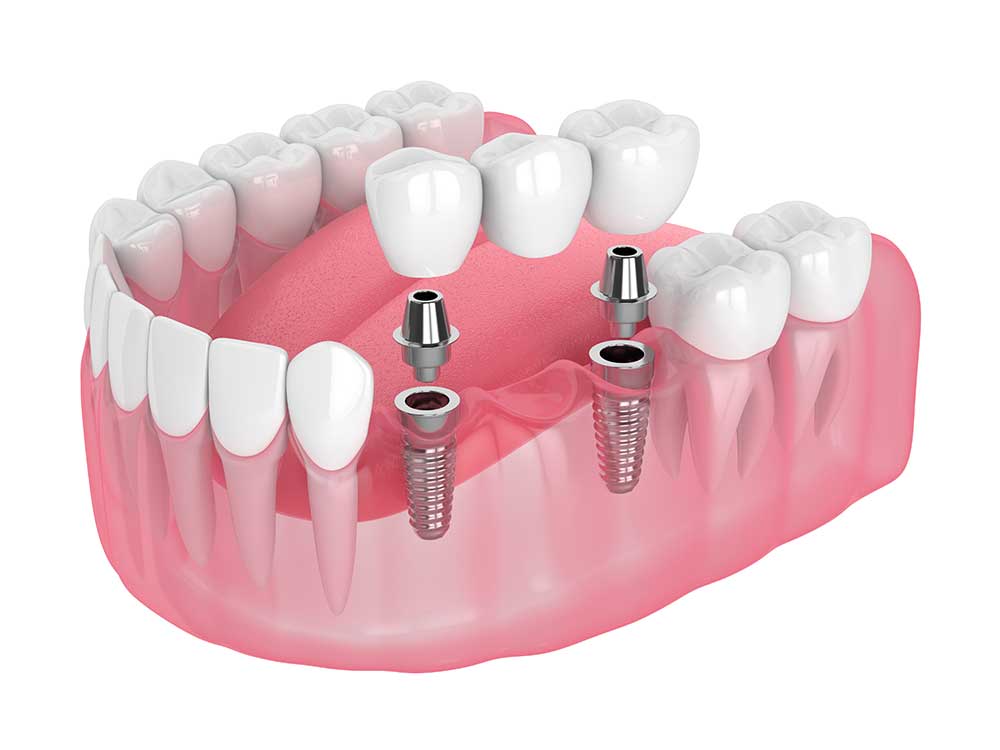Implant Supported Bridges FAQs
1. What is an implant-supported bridge?
An implant-supported bridge is a device to replace multiple missing teeth. Implant-supported bridges are anchored directly to dental implants placed in the jawbone, eliminating the need to alter neighboring teeth.
2. How many implants are needed for an implant-supported bridge?
That varies from patient to patient. Typically, two implants can support three teeth.
3. What are the advantages of implant-supported bridges over traditional bridges?
Implant-supported bridges are better in that they don’t require altering other teeth, are more stable, and prevent bone loss in the jaw.
4. How do implant-supported bridges prevent bone loss?
The jawbone starts losing bone after a tooth is lost because it lacks stimulation that comes from chewing. Implant-support bridges resolve that and stimulate bone growth.
5. Are implant-supported bridges more affordable than individual implants?
Yes, implant-supported bridges overall are more cost-effective because they require fewer posts to support the bridge than individual implants.
6. Can existing dentures be used with implants?
Some dentures can be retrofitted to snap onto implants. This is convenient because it allows patients to keep their current dentures but makes them more secure.
7. What is the procedure for getting an implant-supported bridge?
It starts with an in-office visit for an exam and consultation. Then, there is the implant placement surgery followed by a healing time. The last step is to place the customized bridge.
8. How long do implant-supported bridges last?
They can last many years, especially if you keep up dental check-ups and oral hygiene.


